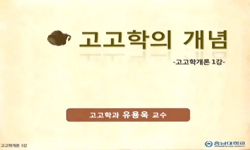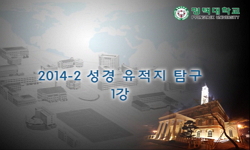최근 신라의 도읍지인 경주지역에서 동제련과 관련된 유적들이 확인되었는데 신라왕경 내에 대한 발굴조사가 증가하면서 이들 공방 관련유적 등에 대한 조사 사례는 증가하고 있는 추세이...
http://chineseinput.net/에서 pinyin(병음)방식으로 중국어를 변환할 수 있습니다.
변환된 중국어를 복사하여 사용하시면 됩니다.
- 中文 을 입력하시려면 zhongwen을 입력하시고 space를누르시면됩니다.
- 北京 을 입력하시려면 beijing을 입력하시고 space를 누르시면 됩니다.
Cu slag 분석을 통한 8C 경주지역 청동생산에 관한 연구 = Study on the Bronze production by Analysis of Cu Slags in 8th century Gyeongju area
한글로보기https://www.riss.kr/link?id=T13598502
- 저자
-
발행사항
용인 : 용인대학교 문화재대학원, 2014
-
학위논문사항
학위논문(석사)-- 용인대학교 문화재대학원 : 문화재보존학과 2014. 8
-
발행연도
2014
-
작성언어
한국어
- 주제어
-
발행국(도시)
경기도
-
형태사항
94 ; 26 cm
-
일반주기명
지도교수: 김수기
- 소장기관
-
0
상세조회 -
0
다운로드
부가정보
국문 초록 (Abstract)
최근 신라의 도읍지인 경주지역에서 동제련과 관련된 유적들이 확인되었는데 신라왕경 내에 대한 발굴조사가 증가하면서 이들 공방 관련유적 등에 대한 조사 사례는 증가하고 있는 추세이다. 그러나 그 이전까지 청동유물의 금속학적 연구는 시대 및 지역적으로 고대의 제작기술 체계에 관해서는 많은 연구가 진행되었지만 제동기술에 관한 연구는 부족한 실정이다. 이는 철기와 달리 국내에서 동제련 유적이 매우 드물게 나타나기 때문이다. 본 연구는 경주 동천동에서 출토된 슬래그들을 대상으로 미세조직 관찰 및 성분분석을 실시하여 동천동 청동공방에서 수행한 제
련형태와 더불어 선행연구 된 동시기의 청동유물과 비교하여 통일신라시대의 청동공방의 운영에 관하여 연구하였다.
경주 동천동에서 출토된 슬래그의 분석결과, 이들은 크게 정련된 동괴, Cu-Sn계 청동괴, Cu-Sn-Pb계 청동괴, Cu-Sn-Pb-As계 청동괴, 슬래그로 구분된다. 정련된 동괴는 동피제련을 거친 조동을 정련하여 순수한 동을 만드는 과정에서 주조된 것이며 청동괴의 경우 앞에 만들어진 정련된 동에 Sn과 Pb, As를 합금하는 과정에서 형성된 덩어리이거나 반제품이다. 이것으로 보아 동천동 청동공방은 공방 자체 내에서 제련작업부터 제품이 완료되기까지의 모든 공정이 수행되었음을 보여준다.
슬래그로 판단되는 2점은 구리광석을 제련하거나 Cu에 Sn과 Pb, As를 합금하는 과정에서 발생하는 찌꺼기로 분석결과 주석산화물이 확인되었다. 이는 주석광석인 석석(錫石)을 제련이나 합금 시 인위적으로 첨가할 때 생성되는 것으로 제련 시 순구리에 석석을 첨가시키거나 동광석과 석석, 납광석을 모두 혼합하여 용융한 것으로 추정된다.
동괴 내에 포함된 개재물의 분석결과 S와 Fe, Se의 검출로 황화동광을 원광석으로 사용하였을 것으로 추정되며 As의 함량이 높은 청동괴의 경우 유비동광(Cu3AsS4)도 함께 사용한 것으로 추정된다.
미량의 원소들은 의도적인 첨가가 아닌 동광석에 포함된 불순물이며, Se는 Pb가 첨가되지 않는 제품에서만 나타나는데 이는 이미 Pb가 포함 되어 있지 않은 동광석을 구별하여 사용했을 가능성을 보여준다.
Cu-Sn계 청동괴들의 합금비는 대략적으로 8:2로 동시기의 청동유물과 비슷한 합금비를 확인하였다. 이처럼 합금비가 비슷하게 나타나는 것은 경주지역의 청동공방이 관영수공업으로 변화하면서 대규모의 공방으로 바뀌어 제품을 전문적으로 대량생산이 가능하였을 것이다.
다국어 초록 (Multilingual Abstract)
Excavations capital cities in Silla in recently, remains associated with the copper smelting in the Gyeongju area is the capital of the Silla has been confirmed is increased, there is a tendency that has been an increase in the case study, such as a w...
Excavations capital cities in Silla in recently, remains associated with the copper smelting in the Gyeongju area is the capital of the Silla has been confirmed is increased, there is a tendency that has been an increase in the case study, such as a workshop related these ruins.
However, much research is advanced with respect to production technology system of ancient and regions era, metallurgical study of bronze relics up before that, in actuality, the research on the braking technology is lacking. Unlike iron, copper smelting ruins is because
appear very rarely in domestic. In this study, the bronze relic in the same period it has been previous research and smelting mode to a subject a copper slag excavated from Dongcheon-dong, Gyongiu, perform component analysis and microstructure observation was carried out in Dongcheon-dong bronze workshop in comparison with,
was studied for the management of bronze workshop of the Unified Silla dynasty.
The results of the analysis of copper slag excavated from
Dongcheon-dong, Gyongiu, these refined copper is classified as, Cu-Sn system bronze prill, Cu-Sn-Pb system bronze prill, Cu-Sn-Pb-As system bronze prill, slag. Refined copper prill are those which are casted in the process of making pure copper by the refined crude copper passing through the matte smelting. Bronze prill is a
semi-product or prill, casted in the process of alloy Sn, Pb and As into refined copper. Dongcheon-dong bronze workshop, shows that the process of all products to the completion of the smelting operation in the workshop itself is performed.
Two points that are determined to slag was confirmed analysis results tin oxide(SnO2) residues that occur during the course of an alloy Pb and Sn, and As in the Cu or smelting copper ore. It is intended to be generated when added artificially during alloy or smelting cassiterite in tin ore. During smelting it is estimated that adding cassiterite into pure copper, or smelting by mixing copper ore, cassiterite and lead ore.
It is estimated that analysis results in the detection of S, Fe and Se the sulfide ores would been used as raw ore, the inclusion contained in the copper prill. It is estimated that the enargite were used together when the bronze prill content high in As.
The Se, which only appear in the product that are not added with Pb, shows the possibility of distinguishing the copper ore does not contain Pb and using it.
Alloy ratio of the Cu-Sn system bronze prills confirmed the alloy ratio similar to that of the bronze relic of the same era in approximately 8:2. Thus, Alloy ratio appears to be similar, bronze workshop of Gyeongju area had changed as the state-run handicraft industry the products were possible in mass production and professionally as the workshop has changed to large-scale.
목차 (Table of Contents)
- Ⅰ. 연구 목적 1
- Ⅱ. 연구 배경 3
- 2.1 유적의 위치 및 고고학적 배경 3
- 2.2 고대 광석의 제련 5
- 2.2.1 동광석의 종류 5
- Ⅰ. 연구 목적 1
- Ⅱ. 연구 배경 3
- 2.1 유적의 위치 및 고고학적 배경 3
- 2.2 고대 광석의 제련 5
- 2.2.1 동광석의 종류 5
- 2.2.2 동(銅)의 제련 6
- 2.2.3 주석(朱錫)의 제련 8
- 2.2.4 납(鉛)의 제련 9
- 2.3 연구사 9
- 2.3.1 문헌기록 10
- 2.3.2 금속학적 선행연구 11
- Ⅲ. 연구 방법 16
- 3.1 연구 대상 16
- 3.2 분석 방법 18
- Ⅳ. 분석 결과 19
- 4.1 A군 19
- 4.1.1 A-1 19
- 4.1.2 A-2-b 21
- 4.1.3 A-6 23
- 4.1.4 A-7 25
- 4.1.5 A-8 26
- 4.1.6 A-9 29
- 4.1.7 A-10-d 31
- 4.1.8 A-10-f 32
- 4.1.9 A-10-g 33
- 4.1.10 A-11-d 35
- 4.1.11 A-12 37
- 4.1.12 A-13 38
- 4.1.13 A-14 41
- 4.2 B군 42
- 4.2.1 B-1-b 42
- 4.2.2 B-1-c 43
- 4.2.3 B-5 45
- 4.2.4 B-8-a 47
- 4.2.5 B-8-b 48
- 4.2.6 B-8-d 51
- 4.2.7 B-8-e 52
- 4.2.8 B-9 54
- 4.3 C군 55
- 4.3.1 C-3 55
- 4.3.2 C-4 57
- Ⅴ. 고찰 59
- 5.1 미세조직과 성분분석결과 59
- 5.2 재료학적 특성 64
- 5.3 선행연구와 비교 66
- Ⅵ. 결론 71
- 참 고 문 헌 74
- ABSTRACT 78












